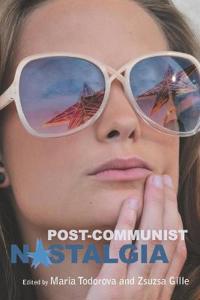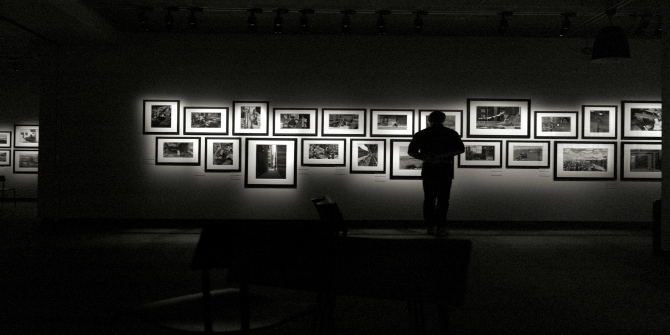Since launching in April 2012, LSE Review of Books has published reviews of over 900 books from across the social sciences. Here are the top five most-read art and literature reviews from 2013, covering representations of the body, philosophy, and museums. Thank you to all of our generous reviewers for their time and enthusiasm.
……………………………………………………………………………………………………………
 Plato on Art and Beauty edited by A.E. Denham
Plato on Art and Beauty edited by A.E. Denham
 This collection of essays presents various aspects of Plato’s views on art and beauty, not only in the Republic but in the Ion, Phaedrus, Symposium, Laws and related dialogues. The selection aims to address a representative range of issues including the moral status of music and visual art, the allure of artistic and sensual beauty, censorship, the relations between aesthetic and moral emotions, truth and deception in art, and the contest between philosophy and poetry. Reviewed by Peter Crack.
This collection of essays presents various aspects of Plato’s views on art and beauty, not only in the Republic but in the Ion, Phaedrus, Symposium, Laws and related dialogues. The selection aims to address a representative range of issues including the moral status of music and visual art, the allure of artistic and sensual beauty, censorship, the relations between aesthetic and moral emotions, truth and deception in art, and the contest between philosophy and poetry. Reviewed by Peter Crack.
Ernst Gombrich lamented that Plato’s mirror analogy from Republic X (a metaphor that seemingly dismisses painting as mere imitation) had ‘haunted the philosophy of art ever since’ (p.182). Despite Plato’s apparent ambivalence towards the arts, his legacy has profoundly impacted artistic theory. Plato on Art and Beauty explores this inconsistency.
Alison Denham’s introduction makes short work of our assumptions, stating that Plato ‘cannot, and did not, fail to recognize the beauty of created works of art’ (p.xv). Denham, Senior Research Fellow in Philosophy at St Anne’s College Oxford, unites ten experts in the field, providing a survey of recent scholarship that will appeal to students of both philosophy and art history alike. Read the full review….
……………………………………………………………………………………………………………
 Post-Communist Nostalgia edited by Maria Todorova and Zsuzsa Gille
Post-Communist Nostalgia edited by Maria Todorova and Zsuzsa Gille
 Although the end of the Cold War was greeted with great enthusiasm by people in the East and the West, the ensuing social and especially economic changes did not always result in the hoped-for improvements in people’s lives. This led to widespread disillusionment that can be observed today all across Eastern Europe. This volume is successful in investigating the diverse meanings and expressions of nostalgia in former Communist countries, finds Lorenzo Ferrari.
Although the end of the Cold War was greeted with great enthusiasm by people in the East and the West, the ensuing social and especially economic changes did not always result in the hoped-for improvements in people’s lives. This led to widespread disillusionment that can be observed today all across Eastern Europe. This volume is successful in investigating the diverse meanings and expressions of nostalgia in former Communist countries, finds Lorenzo Ferrari.
Why do some in Central-Eastern Europe miss the Communist times? Where do such nostalgic feelings come from, and what exactly is missed? The existence of a phenomenon that can be called post-Communist nostalgia is generally accepted in the literature. What is more problematic though, is the elusive character of the concept, and the normative ways in which it is sometimes employed. This volume aims at applying some precision to the concept of post-Communist nostalgia, and at discussing the peculiarity of this type of nostalgia while refraining from moralizing judgements. The essays composing the volume contribute to shed light on what is expressed through post-Communist nostalgia, and on the different means and ways through which it is expressed. Read the full review….
…………………………………………………………………………………………………………….
 Renegotiating the Body: Feminist Art in 1970s London by Kathy Battista
Renegotiating the Body: Feminist Art in 1970s London by Kathy Battista
 What makes art ‘feminist art’? Kathy Battista‘s engagement with the founding generation of female practitioners centres on 1970s London as the cultural hub from which a new art practice arose. Emphasising the importance of artists including Bobby Baker, Anne Bean, and Catherine Elwes, Battista investigates some of the most controversial and provocative art from the era. To be sincerely alive to female and male art practices and the larger cultural, social and political issues concerning us today, we need to be awake to the period discussed in Renegotiating the Body, writes Jade Montserrat.
What makes art ‘feminist art’? Kathy Battista‘s engagement with the founding generation of female practitioners centres on 1970s London as the cultural hub from which a new art practice arose. Emphasising the importance of artists including Bobby Baker, Anne Bean, and Catherine Elwes, Battista investigates some of the most controversial and provocative art from the era. To be sincerely alive to female and male art practices and the larger cultural, social and political issues concerning us today, we need to be awake to the period discussed in Renegotiating the Body, writes Jade Montserrat.
With whom is Kathy Battista hoping to renegotiate? My interpretation of reading this seminal book on a select yet highly charged and important era is that the author is hoping to renegotiate with the cannons of art history. Within the four easily digestible chapters of Renegotiating the Body, Battista, Programme Director of Contemporary Art at Sotheby’s Institute of Art, argues for integration, pronouncing that the wonderful legacy of 1970s feminist art has been largely ignored within art history and museum practice. Read the full review…
…………………………………………………………………………………………………………….
 Bakhtin Reframed by Deborah Haynes
Bakhtin Reframed by Deborah Haynes
 Visionary philosopher and literary critic Mikhail Bakhtin (1895-1975) was largely ignored during his lifetime, yet his work has significantly impacted how we think about visual culture. His ideas renewed interest in the word-forming potential of the creative voice and he developed concepts which are bywords within poststructuralist and new historicist literary criticism and philosophy yet have been under-utilised by artists, art historians and art critics. Jacob Phillips finds that Bakhtin Reframed has much to offer students of the arts and philosophy.
Visionary philosopher and literary critic Mikhail Bakhtin (1895-1975) was largely ignored during his lifetime, yet his work has significantly impacted how we think about visual culture. His ideas renewed interest in the word-forming potential of the creative voice and he developed concepts which are bywords within poststructuralist and new historicist literary criticism and philosophy yet have been under-utilised by artists, art historians and art critics. Jacob Phillips finds that Bakhtin Reframed has much to offer students of the arts and philosophy.
This addition to the Interpreting Key Thinkers for the Arts series follows earlier editions, many of which focus on well-established names in art theory and philosophical aesthetics. Few people interested in this area will not be acquainted with names like Martin Heidegger, Jacques Derrida, or Theodor Adorno, for example. With Mikhail Bakhtin, however, we are on rather different territory. Although engaging with his work makes it clear he is dealing – often with remarkable foresight – with the themes and issues which occupied much continental thought throughout much of the twentieth-century, he does not seem to be one of the established canon to whom art theorists often refer. Read the full review…
……………………………………………………………………………………………………………….
 Museums: A Visual Anthropology by Mary Bouquet
Museums: A Visual Anthropology by Mary Bouquet
 Museums: A Visual Anthropology traverses continents and centuries at a rapid, engaging and easily interpretive pace, providing a summary of the key ideas, debates and texts of the most important approaches to the study of museums from around the world. Essential reading for students of anthropology and museum studies, finds Jade Montserrat.
Museums: A Visual Anthropology traverses continents and centuries at a rapid, engaging and easily interpretive pace, providing a summary of the key ideas, debates and texts of the most important approaches to the study of museums from around the world. Essential reading for students of anthropology and museum studies, finds Jade Montserrat.
Mary Bouquet’s approach to delving into our international treasure-troves is exciting, simple and direct. Bouquet’s is a charmingly digressive investigation covering all angles – museological, anthropological, ethnographical, scientific – comparable with her description of Foster & Partners British Museum Great Court, whose pathways “radiate out, cutting through the former linear narrative of empire.” (p. 121) Sparsely illustrated, and not in the accepted sense (the images are autonomous entities presenting enquiry rather than exemplifying a textural point), the book ultimately signposts readers to seek out field trips. Read the full review….
………………………………………………………………………………………………………………..








2 Comments